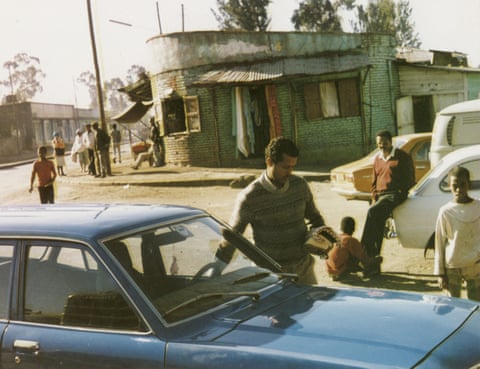Terefe Berlie Asmare moved to Addis Ababa in 1980 and spent much of the next decade driving. He worked at a garage in the Ethiopian capital by day, and studied engineering by night. At weekends he would roam the countryside in his father’s car, with a tent bought from the German embassy in the boot, and a Konica in his pocket.
“I always took the camera with me,” he says, standing in the garden of Addis Ababa’s iconic, though fading, Wabi Shebele hotel, which is still owned by the family of Haile Selassie, Ethiopia’s last emperor.

Children of the Kuas Meda area during an Eid celebration in 1960.
Asmare, now in his 60s, documented his road trips extensively, being one of the few people he knew with a camera – he was the lucky owner of the world’s first commercial autofocus. “There were no photographers at that time,” he recalls. “So I did most of the pictures myself, often with a self timer.”
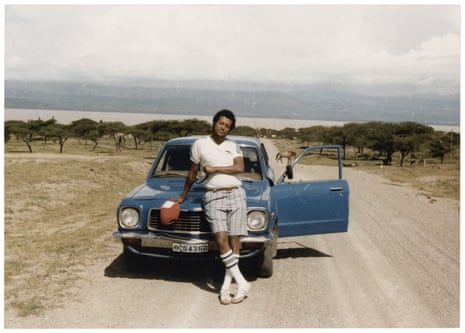
Asmare, soaking it all in during a road trip to Langano in the 80s.
In one carefree shot he leans cockily against his Mazda car in view of Lake Langano, a spot popular with Addis Ababa’s middle classes then and now. His white socks are pulled up high and a red baseball hangs nonchalantly from his fingers. It’s a world away from the land of famine and war that foreign photojournalists etched in the popular consciousness of the 1980s.
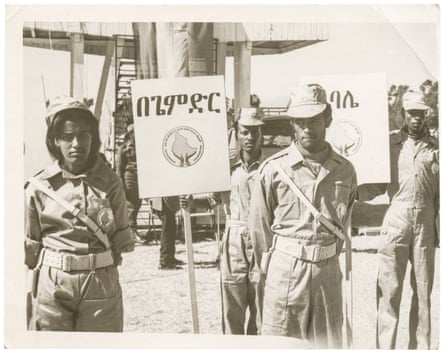
Zemecha (development through cooperation campaign) was an ideological community service campaign during the communist Derg regime.
Terefe’s photos – he believes has more than 1,000 from this period – might have disappeared were it not for Vintage Addis Ababa. A website that started in July 2017 as a Tumblr page, the project Vintage Addis Ababa invites Ethiopians to share old photos from family archives as a part of an effort to document the lives of various people throughout the country’s tumultuous 20th century of empire, war and revolution.
Vintage Addis Ababa is the brainchild of Philipp Schütz, a Swiss publisher and photographer based in the city, of Wongel Abebe, an Ethiopian photographer, and of Nafkot Gebeyehu, a documentary photographer. The project peels away the popular cliches to reveal a more innocent city with an intimate and familiar past.
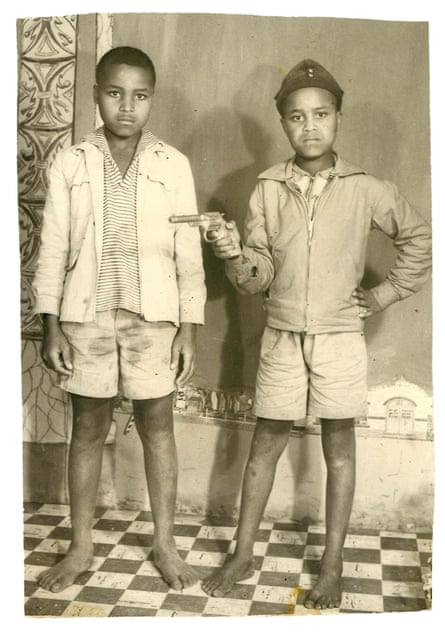
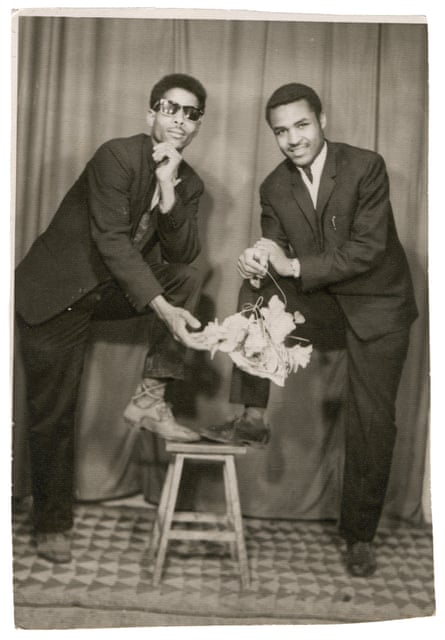
Gelan, left, photographed with a childhood friend and with him again years later.
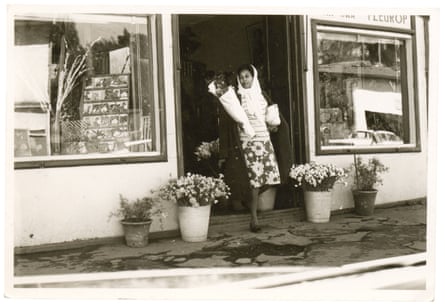
Schütz says, referring to some of the 1,800 plus photographs they have amassed so far: “They look exactly like my parents’ family archive, of the photos of my grandparents in the 1950s.” He and Abebe were surprised by the enthusiasm with which the city’s residents accepted the idea. “It was totally unexpected,” he says. “We’re not digging out 100-year-old photos. These are just everyday, family, stories from a time which a lot of people still remember.”
“She was a very stylish mother.” Zufan photographed by her husband from their car. She regularly went out to buy flowers for Keflay’s hotel and her home.
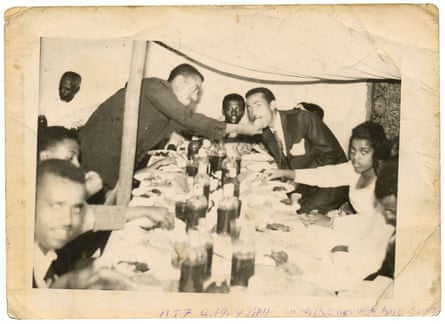
Celebrating with gursha, a traditional, often playful, gesture of appreciation.
Abebe thinks the project taps into a latent frustration with the way the Ethiopia has been represented over the years. “People are sick and tired of the famine and all that,” she says. “This is about how people want to be remembered.” Many of the photos they have received were submitted by friends and relatives wishing to commemorate their departed, or ageing, loved ones.
Photographs belonging to the late Kassa Gebru, an engineer-turned-businessman who built Addis Ababa hotel in the 1950s, were given to Abebe by his daughter, who felt he deserved recognition for founding the city’s first venue for live jazz.

A live band at Shuferochu nightclub, a spot for music lovers opened by Kassa Gebru.
The project also appeals to the occasional nostalgia some Ethiopians feel for their past, even for a period like the 1980s, a decade stained by bloodshed and economic privation under the communist regime known as the Derg.
“I was a bachelor,” says Asmare. “I spent most of my time travelling and I really enjoyed it. In Addis there was less traffic because nobody had cars – the Derg had banned imports – and on Saturday nights there would be parties in Ras hotel, in Ghion hotel, and of course here in Wabi Shebele. When I look at the photos in my albums it’s like a dream.”
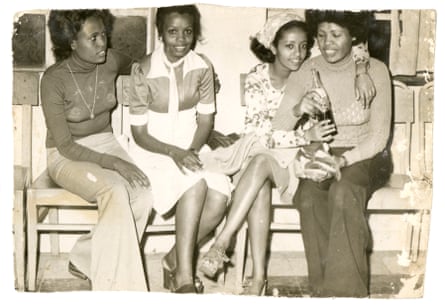
“A day trip to Debre Markos was one of the most rebellious things I’ve done growing up,” says Genet, pictured second from the right.
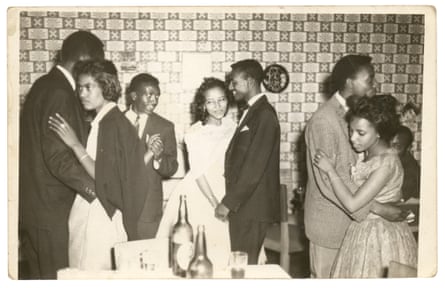
Genet and Mulugeta on their wedding day in the 1960s with friends Konjit and Tesfay.
“Genet’s father was very strict, like most fathers at the time. She wasn’t allowed to go out of the house besides go to school; she was expected to come straight home afterwards and would be in trouble if she didn’t arrive within 30 minutes after home-time.” Girls at the time were expected to be timid and walk with their heads tucked down. They weren’t allowed to leave their house for just recreation. “One time, a few girlfriends and I took a photo as we celebrated a friend’s graduation at Addis Ababa university, as she earned her business degree. I had to hide that picture for years so my father wouldn’t see it.”
Vintage Addis Ababa is part of a broader trend towards revisiting and rethinking Africa’s recent history. Schütz was inspired by a project that digitises old Ugandan photographs, though his focus was narrower and with more emphasis on family and private lives.
Calling to mind the work of the late Malian photographer Malick Sidibé, and Burkina Faso’s Sory Sanlé, both of whom captured the colourful optimism of post-independence west Africa, these photos of mid-century Addis Ababa evoke a similar mood. They chart the evolution of fashion, hairstyles, and even the city’s physical environment, making Vintage Addis Ababa a rich exercise in cultural history. Some of the districts seen here have long since disappeared, or, like the old Italian quarter known as Piassa, are now on the brink of demolition.
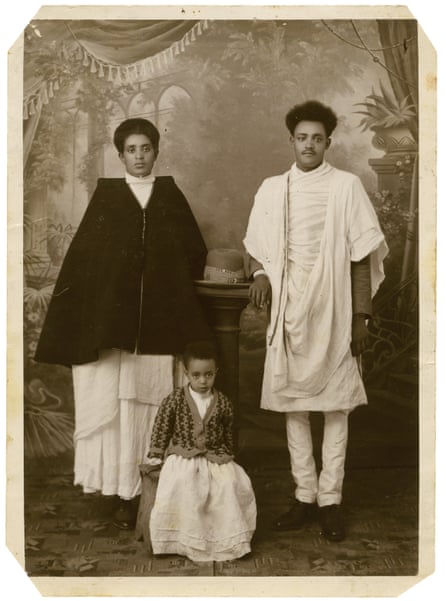
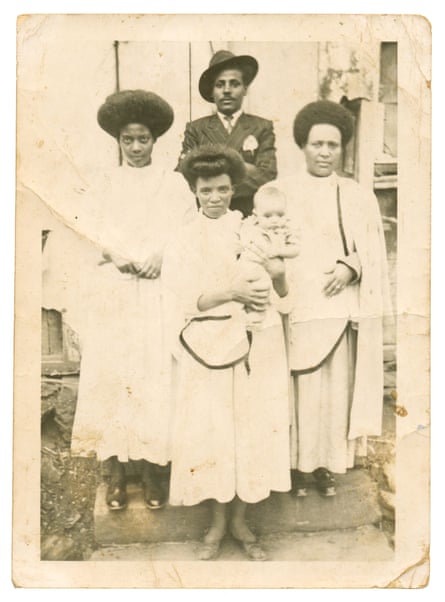
Little Albash, the daughter of a businessman from Gojam, as a four-year-old in 1941 with her aunt Berhane and uncle Mengesha. Right: Tsedek Banjaw (middle) and her sisters Abebech (right) Yeshi Gebereyes, a talented Kirar (traditional string instrument) player (left) with their baby brother Zewdu, in 1947.
The project started out as a website aiming to reach as many Ethiopians as possible, but it is soon to be published as a book. The team also hope the idea will eventually spread to other Ethiopian cities.
As it stands, Vintage Addis Ababa offers a glimpse into the past but only a fleeting one. “We don’t want to be misleading,” says Abebe, of the project’s title. “You can never represent the whole of Ethiopia in pictures.”
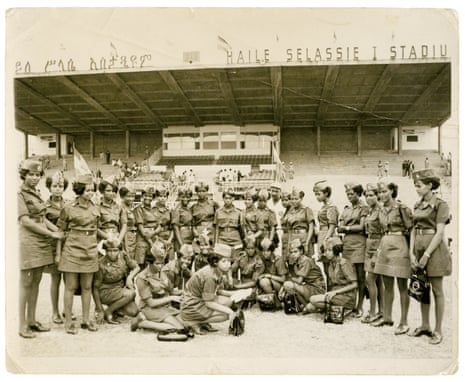
Tsehay Teferedegn, was of the 62 women who went to the academy in Holetta to receive full military training in 1964.
“We learned everything, starting from shooting and marching, to office administration and finance,” she remembers. After an intensive training that took well over a year, the women were graduated by the emperor himself. The newly inaugurated women army never went to a battlefield. “We were always invited to shows and asked to make appearances at official events,” Tsehay chuckles, “We were treated more like celebrities.”
